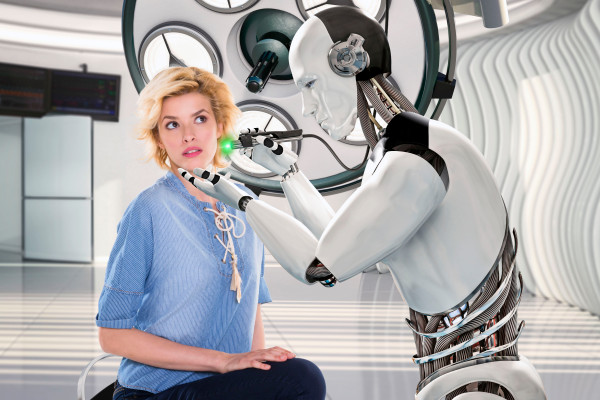人工智能最终将如何偷走白领的工作
人工智能最终将如何偷走白领的工作
New Yorkers might imagine they are safe from automation. Your city, after all, is a white-collar city: a place packed with lawyers and accountants, architects and consultants, bankers and marketeers, doctors and teachers. Your work, the argument goes, is far too “complex” to be done by any machine — even the most capable. This view, though, is very likely to be wrong.
纽约人可能会认为,他们不会受到自动化的影响。毕竟,他们的城市是一个白领城市:一个律师和会计师、建筑师和顾问、银行家和市场营销人员、医生和教师云集的地方。他们认为,自己的工作足够“复杂”,以至于任何机器都无法完成——即使是最有能力的机器。然而,这种观点很可能是错误的。
It is true that, in the 20th century, the most dramatic effects of technological change were confined to blue-collar work, the world of farmers and factory workers. The British agricultural industry, for instance, produces five times as much today as it did in 1861, but requires only around a tenth of the number of workers; its manufacturing sector produces about 150 percent more than in 1948, yet requires 60 percent fewer people to do it.
的确,在20世纪,技术变革最显著的影响仅限于蓝领工人、农民和工厂工人。例如,英国农业今天的产量是1861年的五倍,但只需要十分之一的工人;美国制造业的产量比1948年增加了150%,但是需要的劳动力却减少了60%。

But in the 21st century, as this progress relentlessly continues, these effects will seep out from blue-collar corners of economic life and flood the white-collar world as well.
但在21世纪,随着这一进步不懈地继续下去,这些影响将从经济生活的蓝领角落渗透出来,并淹没白领世界。
It is increasingly clear that a lot of what white-collar New Yorkers do is not that “complex” or difficult after all. In fact, when you break down any job into all the “tasks” that make it up, it is obvious that people do a lot of different things in their work — and many of these are actually relatively simple. This point was driven home in a 2017 study by McKinsey & Company, which reviewed 820 occupations in the United States. While fewer than 5 percent of these could be completely automated with existing technologies, more than 60 percent were made up of tasks of which at least 30 percent could be automated, the study found. In short, most jobs — including white-collar ones — already involve a sizeable chunk of activity that can be automated.
越来越明显的是,纽约白领做的很多事情根本不是那么“复杂”或困难。事实上,当你把任何一项工作分解成所有组成它的“任务”时,很明显,人们在他们的工作中做了很多不同的事情——其中许多实际上是相对简单的。麦肯锡公司(McKinsey & Company) 2017年的一项研究充分说明了这一点。该研究考察了美国的820个职业。研究发现,虽然只有不到5%的任务可以通过现有技术实现完全自动化,但超过60%的任务可以由至少30%的任务实现自动化。简而言之,大多数工作——包括白领工作——已经包含了大量可以自动化的活动。
Traditionally, many experts have believed that machines had to copy the way human beings think and reason in order to outperform them. Getting a computer to diagnose an illness, for example, meant asking doctors to explain their thought processes and trying to get a machine to copy those same lines of reasoning.
传统上,许多专家认为,为了超越人类,机器必须模仿人类的思维和推理方式。例如,让一台电脑诊断一种疾病,意味着要求医生解释他们的思维过程,并试图让一台机器复制这些相同的推理过程。
This was why “complex” tasks once seemed so hard to automate: Doctors would likely say they based a diagnosis on instinct or judgment or intuition, things that are impossible to capture in a set of rules for a computer to follow. And if human beings struggle to explain exactly how they perform a task, it’s difficult to tell a machine how to do it.
这就是为什么“复杂”的任务一度看起来很难自动化的原因:医生们可能会说,他们的诊断是基于直觉、判断或直觉,而这些东西是不可能用一套规则让电脑遵循的。如果人类很难准确地解释他们是如何完成一项任务的,那么就很难告诉机器如何完成这项任务。


















